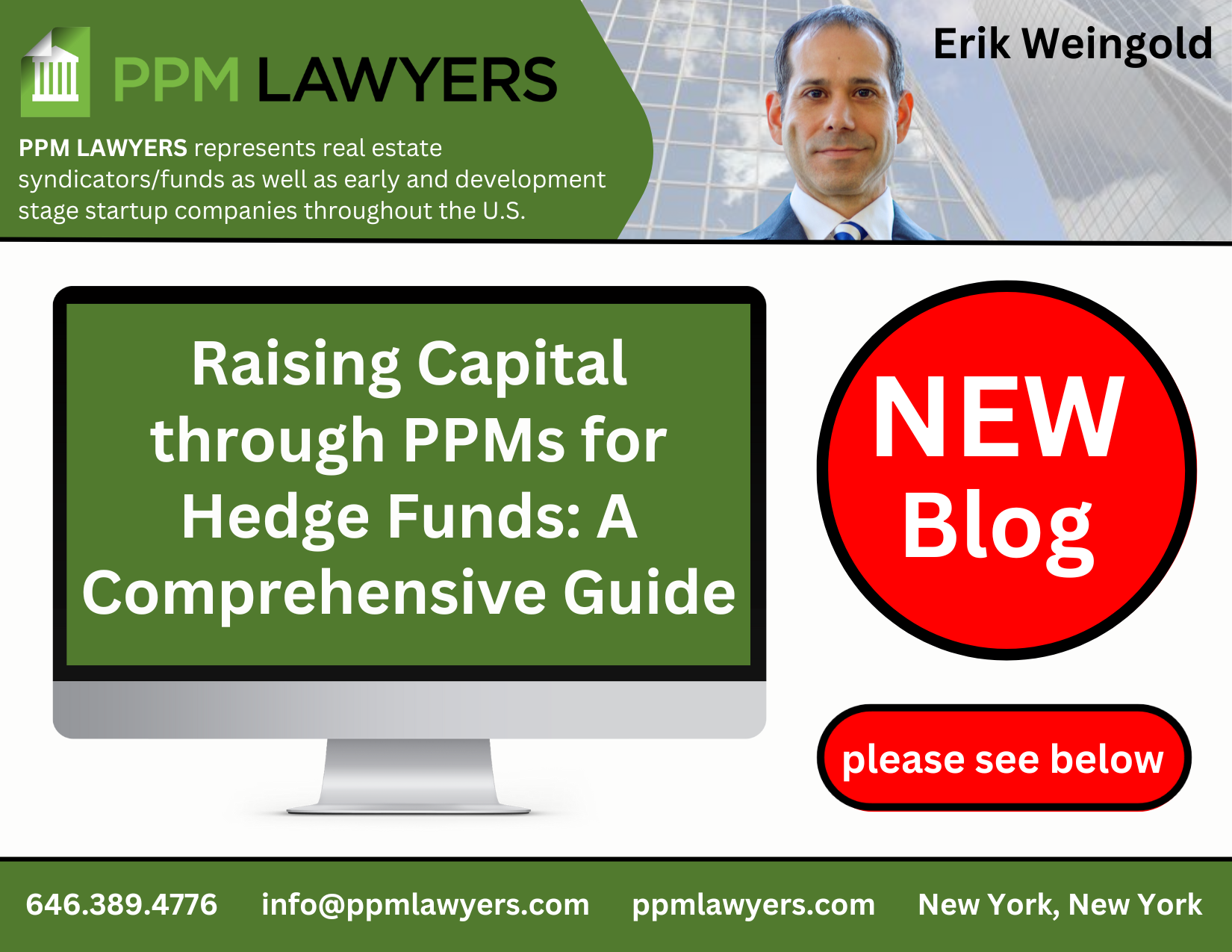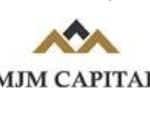In today’s complex financial landscape, hedge funds represent an attractive investment vehicle for sophisticated investors. Raising capital for a hedge fund, however, is no simple task. It requires adherence to various legal and regulatory frameworks, strategic planning, and an in-depth understanding of potential investors’ needs.
One of the most effective ways to raise capital for hedge funds is through Private Placement Memorandums (PPMs). This comprehensive guide will walk you through the critical aspects of using PPMs for raising capital, the benefits they offer, the legal considerations involved, and how you can create an effective PPM to achieve your fundraising goals.
What Is A Private Placement Memorandum (PPM)?
A Private Placement Memorandum (PPM) is a legal document that outlines the objectives, risks, terms, and conditions of an investment. In the context of hedge funds, PPMs are essential in providing prospective investors with all the necessary information they need to make an informed investment decision.
Why Use PPMs For Hedge Funds?
1. Legal Compliance:
PPMs are crucial in complying with Regulation D under the Securities Act of 1933. They help in safeguarding against potential legal challenges by detailing all pertinent information about the investment opportunity.
2. Transparency and Trust:
A well-crafted PPM demonstrates transparency and builds trust with prospective investors, by outlining the fund’s investment strategies, management team, fee structure, risk factors, and more.
3. Tailored Marketing:
PPMs allow hedge fund managers to provide customized information that resonates with the specific needs and interests of potential investors.
Key Components Of A Hedge Fund PPM
1. Executive Summary:
An overview of the hedge fund, its objectives, investment strategies, and key management team members.
2. Investment Strategies and Objectives:
Detailed explanation of the investment methodologies, target markets, risk management strategies, and overall investment objectives.
3. Risks and Disclosures:
A thorough examination of potential risks, including market, credit, liquidity, operational risks, and regulatory considerations.
4. Fee Structure and Expenses:
A breakdown of management fees, performance fees, and other expenses that investors should be aware of. More about this below.
5. Subscription Procedures:
Instructions on how investors can subscribe to the fund, including the necessary forms, such as investor questionnaires and subscription agreements.
6. Legal and Regulatory Compliance:
Detailed information on compliance with relevant federal and state regulations, including SEC and state notice filings.
Creating An Effective PPM For Your Hedge Fund
1. Understand Your Target Audience:
Tailor your PPM to resonate with the interests and needs of your target investors.
2. Work with Experienced Legal Professionals:
Engaging with specialized law firms, such as Weingold Law – PPM LAWYERS, will ensure that your PPM is compliant with all relevant regulations and is crafted with a professional touch.
3. Provide Comprehensive Details:
Avoid vague language and provide detailed information on all aspects of the investment opportunity. Clarity and transparency are key to building trust.
4. Utilize Professional Design and Layout:
A well-designed PPM reflects professionalism and makes it easier for potential investors to navigate through the document.
Typical Structures For Hedge Funds: An Insight Into Manager-Managed LLCs And Financial Arrangements
Hedge funds often adopt different legal structures to suit their operational needs and investment strategies. Understanding these structures is vital for both fund managers and investors to navigate the complexities of the investment world.
Manager-Managed LLCs
One common structure for hedge funds is the manager-managed Limited Liability Company (LLC). Here’s how it typically works:
1. Management Flexibility:
In a manager-managed LLC, the management team or designated manager holds primary control over the fund’s operations, including investment decisions and day-to-day administration.
2. Investor Protection:
Investors’ liability is generally limited to their capital contributions, thus protecting them from personal liability for the LLC’s debts or obligations.
3. Tax Considerations:
LLCs often provide pass-through taxation benefits, meaning profits and losses flow directly to members, avoiding double taxation.
Management Fees versus Investor Returns
The financial arrangements in hedge funds usually comprise a combination of management fees and performance-based fees. Here’s a breakdown:
1. Management Fees:
These are typically charged as a percentage of the assets under management (AUM), often ranging from 1% to 2%. They cover operational costs and are typically paid regardless of the fund’s performance.
2. Performance Fees:
Often referred to as incentive fees, these are based on the fund’s profits and align the interests of the managers with those of the investors. Commonly set at 20% of profits, these fees reward managers for positive performance.
Waterfall Provisions
Waterfall provisions are structured payout arrangements that dictate the order and percentages in which profits are distributed among investors and managers.
1. Hurdle Rate:
A specified minimum return that must be achieved before performance fees are paid to the managers.
2. Catch-Up Provision:
After the hurdle rate is met, managers may receive a larger percentage of the next profits to “catch up” on the performance fees.
3. Profit Split:
Once the catch-up is complete, profits are generally split between investors and managers according to an agreed-upon ratio, such as 80% to investors and 20% to managers.
Investment Company Act Issues In Hedge Funds
When dealing with hedge funds, compliance with the Investment Company Act of 1940 is paramount. This Act regulates investment companies and has significant implications for hedge funds. Here’s what you need to know:
1. Definition of an Investment Company
A hedge fund often falls under the definition of an investment company under the Act. However, most hedge funds seek to avoid registration by qualifying for exemptions, such as Section 3(c)(1) or Section 3(c)(7) of the Act.
2. Exemptions and Compliance
Section 3(c)(1) Exemption
This exemption applies to funds that are beneficially owned by no more than 100 investors and are not making a public offering. It often applies to smaller hedge funds.
Section 3(c)(7) Exemption
This exemption is for funds that are only owned by “qualified purchasers” and are not making a public offering. It is typically used by larger hedge funds.
3. Consequences of Non-Compliance
Failure to comply with the Act or meet the requirements for an exemption can lead to serious consequences, including potential fines, regulatory actions, and the inability to operate.
Conclusion
The structuring of hedge funds, including the use of manager-managed LLCs and detailed financial arrangements, plays a crucial role in aligning the interests of investors and fund managers. It ensures transparency, accountability, and mutual benefit.
Understanding these structures and arrangements empowers investors to make informed decisions and align their investments with their financial goals. Similarly, fund managers can optimize their funds’ structures to meet operational needs, comply with legal requirements, and attract sophisticated investors.
Raising capital through PPMs for hedge funds is a specialized process that requires careful planning, strategic thinking, and adherence to various legal and regulatory requirements. By understanding the role of PPMs and utilizing professional legal support, hedge fund managers can create compelling and compliant PPMs that resonate with potential investors.
At Weingold Law – PPM LAWYERS, we specialize in drafting private placement memorandums for hedge funds and other investment vehicles. With our flat-fee service, expert counsel, and commitment to your success, we stand ready to assist you in your capital-raising journey.
For further assistance and to empower your hedge fund with the necessary legal documents to efficiently raise capital, feel free to contact us today. Together, we’ll set your hedge fund apart with a successful offering.
In our next blog, we will be discussing the “Benefits and Challenges of Raising Capital for Crypto Funds” – a topic not to be missed. See you then!
(Note: The above information is provided for general understanding and does not constitute legal advice. Specific structures and financial arrangements may vary based on jurisdiction, fund size, investment strategy, and other factors. Consultation with legal professionals is strongly advised for detailed guidance. Always consult with legal professionals for your specific needs and circumstances.)


















